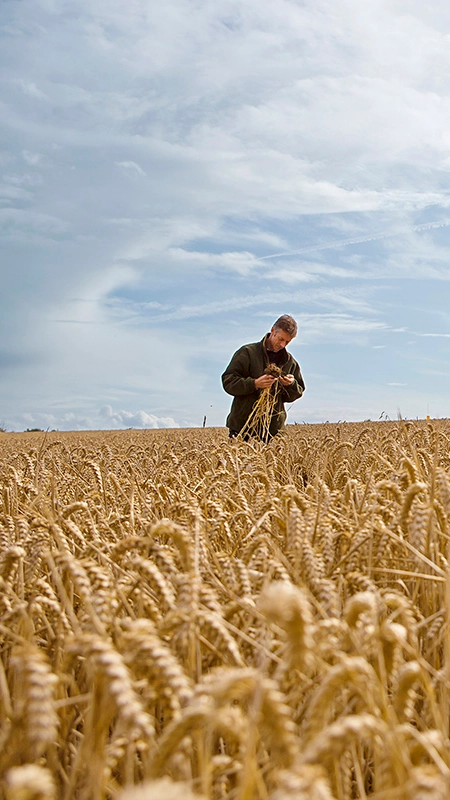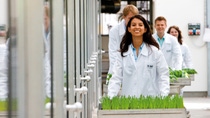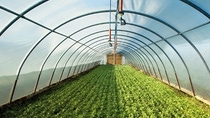News & Media
Wheat from and for the future
The young wheat plants are planted in rows in the greenhouse of the BASF Innovation Center in Ghent. At first sight, they are not different in any way from the wheat grown in our Belgian fields. However, these wheat plants may well be the answer to the increasing demand for food. And all this thanks to their unique genetic code.
“Wheat is used to make biscuits, couscous, cereals and, of course, bread. Yet, we don't always realise that it’s one of the oldest food crops in the world,” says John Jacobs, Program Leader at the BASF Innovation Center. “At the same time, the crop still has a great future ahead of it!”
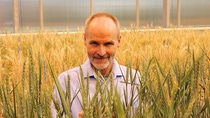
It is estimated that there will be around 10 billion people by 2050. If we want to keep feeding all these mouths, global wheat production must increase by 50% to 60%*. “Making more farmland available is not an option,” says Jacobs. “If you add the increasingly unpredictable weather conditions to the equation, as a result of climate change, you know that we are facing a very big challenge.
We therefore need to develop wheat varieties that can thrive in more extreme conditions and deliver a higher and stable yield. One of the most promising techniques to achieve this is genome editing. It implies making very specific and precise adjustments to the genome of the wheat plant by using the genetic material that is present in the plant.”
The inside is what matters
In a human being, your genes largely determine who you are: from the colour of your eyes to how tall you will become and how susceptible you will be to disease. That’s exactly the same for wheat. Some genes determine how fast the plant will grow, how resistant it will be to heat or how many grains it will produce. “Understanding which genes control certain properties and how we can adapt the genetic material is a major breakthrough. Not only for science, but also for the growing world population,” says Jacobs.
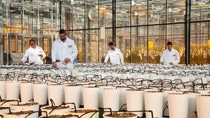

That is where the International Wheat Genome Sequencing Consortium (IWGSC) comes in. BASF is a member of this organisation. In the IWGSC, researchers, wheat producers and growers from 68 countries are working together to make the reference genome of bread wheat publicly available. “We finally succeeded in isolating it in 2018, after 13 years of research,” says Jacobs. “The wheat genome contains about 100,000 genes and is five times larger and much more complex than the human genome. The fact that the IWGSC was able to develop the reference genome for wheat was an important step in the discoveries we made at the Innovation Center. For example, it has already helped us to discover new genes that are essential for flowering and pollen development. Knowledge of the gene sequences is also essential for all forms of genome editing.”
Understanding which genes control certain properties is a major breakthrough. Not only for science, but also for the growing world population.
Through innovations in sequencing technology, a wheat genome can now be revealed much faster and at a lower cost. Jacobs: “That is why, in the next phase, the IWGSC wants to define the complete genome sequence of 10 additional wheat lines, so that we can get a complete picture of the genetic variation in all wheat genes. BASF will also contribute to this project.”
* Source: CGIAR
